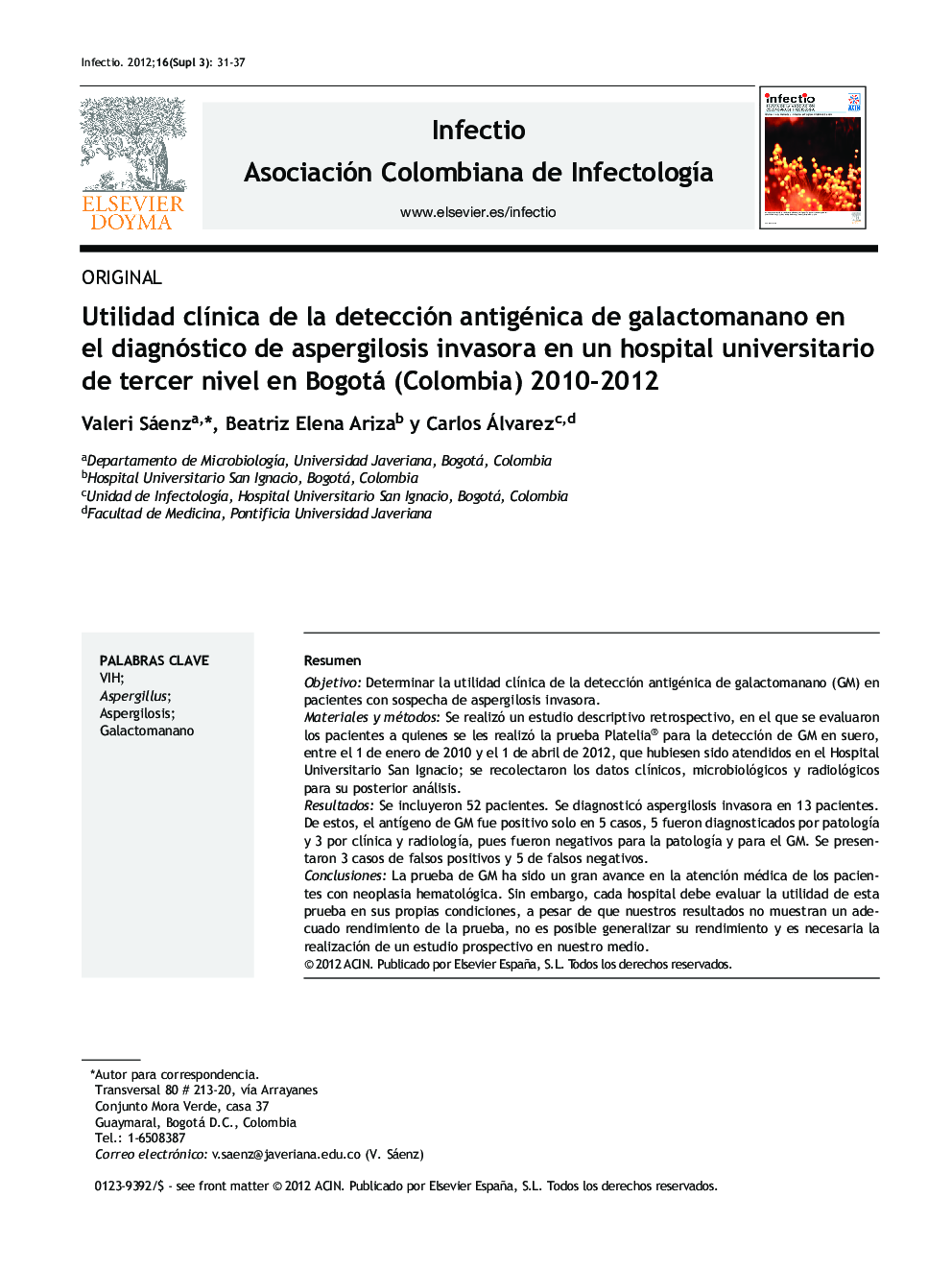| Article ID | Journal | Published Year | Pages | File Type |
|---|---|---|---|---|
| 3403769 | Infectio | 2012 | 7 Pages |
ResumenObjetivoDeterminar la utilidad clínica de la detección antigénica de galactomanano (GM) en pacientes con sospecha de aspergilosis invasora.Materiales y métodosSe realizó un estudio descriptivo retrospectivo, en el que se evaluaron los pacientes a quienes se les realizó la prueba Platelia® para la detección de GM en suero, entre el 1 de enero de 2010 y el 1 de abril de 2012, que hubiesen sido atendidos en el Hospital Universitario San Ignacio; se recolectaron los datos clínicos, microbiológicos y radiológicos para su posterior análisis.ResultadosSe incluyeron 52 pacientes. Se diagnosticó aspergilosis invasora en 13 pacientes. De estos, el antígeno de GM fue positivo solo en 5 casos, 5 fueron diagnosticados por patología y 3 por clínica y radiología, pues fueron negativos para la patología y para el GM. Se presentaron 3 casos de falsos positivos y 5 de falsos negativos.ConclusionesLa prueba de GM ha sido un gran avance en la atención médica de los pacientes con neoplasia hematológica. Sin embargo, cada hospital debe evaluar la utilidad de esta prueba en sus propias condiciones, a pesar de que nuestros resultados no muestran un adecuado rendimiento de la prueba, no es posible generalizar su rendimiento y es necesaria la realización de un estudio prospectivo en nuestro medio.
AimTo determine the clinical utility of galactomannan antigen detection in patients with suspect of Invasive Aspergillosis.Tools and methodsA retrospective descriptive study was performed on patients seen in the University Hospital who were tested with the Platelia® Galactomannan (GM), between the 1st of January 2010 and the 1 st of April of 2012. Clinical, microbiological and radiological data were collected for further analysis.ResultsA total of 52 patients were included in the study. Invasive Aspergillosis (IA) was detec- ted in 13 patients, in whom the GM antigen was positive in only 5 cases, another 5 cases were detected by pathology, and the remaining 3 were detected clinically and by radiology because they were negative for the pathology and the GM. Additionally, 3 cases were false positives and 5 cases were false negative.ConclusionsThe GM test has been a big advance in the medical care of patients with hema- tological malignancies. However, each hospital must evaluate the utility of these test in their own conditions, as our results do not show good performance of the test, these results can not be generalized. There is a need to perform a prospective study on this aspect.
